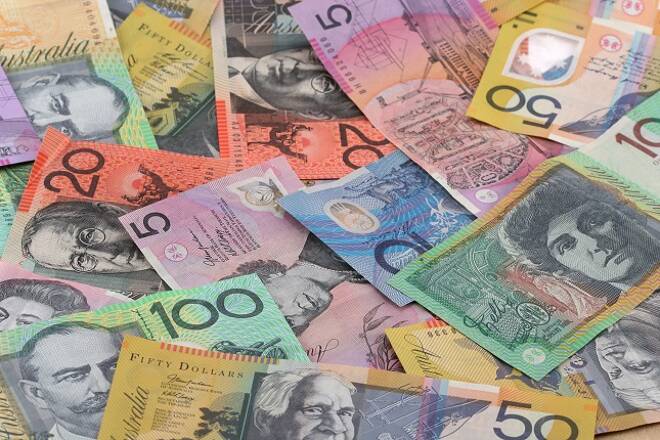Advertisement
Advertisement
OECD Warns of Hard Landing in Australian Housing Market, Others See RBA Rate Cut in Late 2019
By:
The Australian Dollar is likely to remain under pressure throughout 2019. The on-going trade dispute is likely to continue to weaken exports which should force the RBA to keep policy unchanged because lower rates are helping to keep the economy afloat as it rides out the storm. However, an escalation of the trade dispute combined with a faster pace of declines in housing prices could force the central bank to lower rates. This would keep the downside pressure on the Aussie Dollar.
For several months, Australian Dollar investors have been led to believe that the U.S.-China trade dispute is exerting the most negative pressure on the currency. However, last week, another culprit moved near the forefront – Australia’s housing market. Currently, a hard crash in the housing market is only speculation, but conditions could weaken rather quickly if regulators are unprepared.
Although last week’s economic data signaled a weakening Chinese economy, I believe the on-going trade negotiations between the two economic powerhouses will be settled sooner-than-expected, therefore, the world’s second largest economy will likely avoid a prolonged economic slowdown.
This news may result in a short-term rebound in the Australian Dollar, however, these gains are likely to be limited while being met with another wave of aggressive selling pressure tied to an escalation of issues in the Australian housing market. This looming problem is not being caused, per se, by the trade dispute, but by domestic issues. So the lifting of concerns over the trade dispute is not likely to lead to a sudden improvement in the housing market.
QECD Warns of Hard Landing in Australian Housing Market
According to the world’s leading economic agency, Australia’s financial regulators should begin bracing for a potential hard landing in the housing market.
Last week, the Organization for Economic Co-operation and Development (OECD), said the housing market in Australia poses a risk to the nation’s economic growth. The Paris-based group said in a report on Monday that the current weakness in the housing market is being fueled by elevated house prices and related household debt.
Although house prices have been gradually falling since topping in late 2017, and the market is on track for a soft landing, the OECD said, it stressed some risk of a hard landing remains and regulators should be ready for the scenario.
“Financial supervisors and bank regulators should be prepared in the event of a hard landing in the housing market,’ the report states.
AMP Capital Investors Not as Optimistic as OECD
AMP Capital Investors was not as optimistic as the OECD saying last Monday that the nation’s tumbling property prices could trim up to 1.2 percentage points from economic growth in 2019 as the decline hits housing construction and consumer spending.
In predicting an additional 10 percent decline in Sydney and Melbourne prices, taking their peak-to-trough fall to 20 percent, AMP Chief Economist Shane Oliver said in a research report that he sees this to be a “perfect storm” of negativity for housing.
He also predicts the Reserve Bank of Australia will cut interest rates in the second half of 2019 and end the year with a cash rate at 1 percent. In its last monetary policy statement, the RBA kept the official cash rate at a record low of 1.5%. It hasn’t changed rates since August 2016, and has signaled that it’s not likely to change for some time.
AMP predicts that an RBA rate cut will not be aimed at re-inflating property values, but to support household spending.
Impact on Australian Dollar
The Australian Dollar is likely to remain under pressure throughout 2019. The on-going trade dispute is likely to continue to weaken exports which should force the RBA to keep policy unchanged because lower rates are helping to keep the economy afloat as it rides out the storm.
However, an escalation of the trade dispute combined with a faster pace of declines in housing prices could force the central bank to lower rates. This would keep the downside pressure on the Aussie Dollar.
Even if the trade dispute is settled, it may not be enough to offset falling housing prices. This too will encourage the RBA to cut rates late next year.
About the Author
James Hyerczykauthor
James is a Florida-based technical analyst, market researcher, educator and trader with 35+ years of experience. He is an expert in the area of patterns, price and time analysis as it applies to futures, Forex, and stocks.
Latest news and analysis
Advertisement
